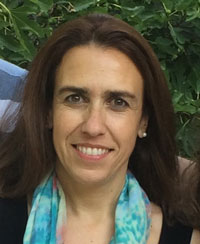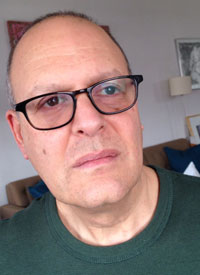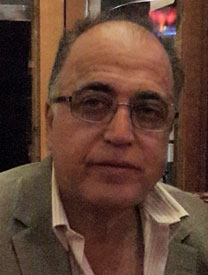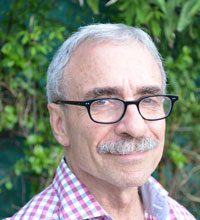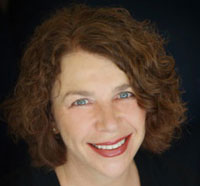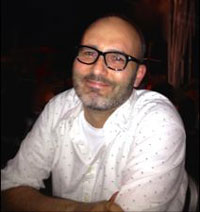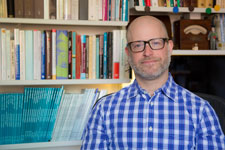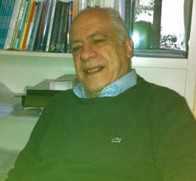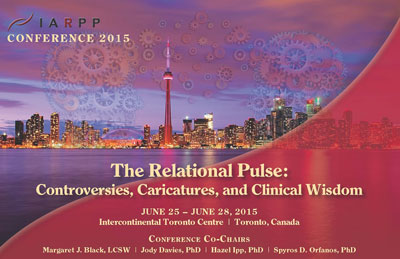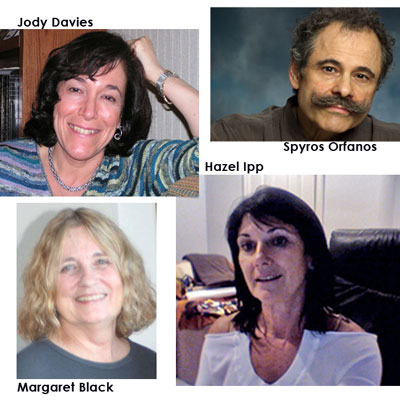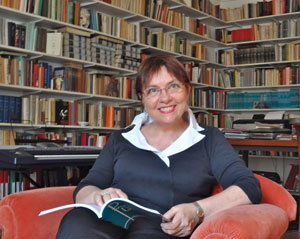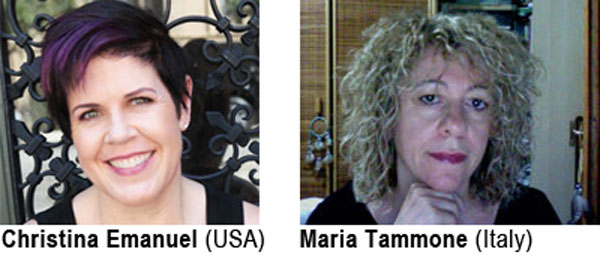Interviewed by Maria Tammone (Italy)
(clicca qui per italiano)
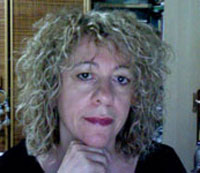
Maria Tammone
In our contemporary psychoanalytic world, reflection and debate on different models and perspectives of psychoanalytic thinking is more lively and fruitful than ever. Within this rich context Professor Nino Dazzi is among the most active and authoritative voices in Italy and internationally.
Professor Nino Dazzi was born in Berlin in 1937 and was among the founders and first lecturers in the field of psychology in Italy, his academic career having begun in the early 1970s. Since then, his career as an academic has continued seamlessly within the psychology department at La Sapienza University in Rome, where he has been Professor of Dynamic Psychology, Dean of Faculty (1994-2003), and Vice Chancellor of the university (2005-2008). In addition, he has many times been President of the MIUR (Italian Ministry for Education, University and Research) Committee on Psychotherapy Specialization Schools (1999-2002, 2006-2009, 2009-present), in addition to his many contributions within the broader international academic community.
Professor Dazzi is one of the most esteemed and respected scholars in the theory of attachment, having studied it from the time of its origins through its contemporary developments. Indeed, he studied with Mary Main when she held her first course in Rome on the Adult Attachment Interview in 1989. Together with other Italian scholars (in particular G. Liotti, who studied with Bowlby), Dazzi is a leading advocate for attachment theory in Italy, having authored many publications on this topic. He has led numerous conferences, meetings, and study groups on the evolution of attachment theory within the history of psychoanalytic thinking, noting its connections to and differences from other aspects of contemporary psychoanalytic theory, particularly the relational perspective.
We recently asked Professor Dazzi a few questions about his work.
Maria Tammone: We can certainly consider John Bowlby (1907-1990) as the name of reference when considering attachment theory and its dissemination throughout the academic world. Attachment theory maintains that human beings manifest an innate inclination to develop “attachment relationships” with their parents or with other members of the same species (Baldoni, 2013). The concepts introduced by Bowlby were in opposition to classical psychoanalytic ideas about the reasons human beings develop significant bonds. As is well known, Freud’s drive theory maintains that a child develops a significant bond with its mother to gratify its desires of a sexual nature, especially oral ones. Conversely, attachment theory demonstrates that the need to be protected from danger is an equally strong primary motivation for our species. Therefore, Bowlby’s main objective was to bring psychoanalysis closer to contemporary science, formulating concepts based on research data and using a methodology that would make it possible for the initial assumptions to be tested.
His second objective was clinical, insofar as he hoped his ideas would contribute to the development of more modern and effective psychological treatment. For Bowlby the interpretation function was reshaped in favor of a greater emphasis on interpersonal relations (Dazzi, Zavattini, 2011). Indeed, until recently, the majority of psychoanalysts continued seeing this perspective as “anti-psychoanalytic,” thinking that a clinical approach based on interpretation was not compatible with one based on attachment.
However, Bowlby (who was analyzed by Joan Riviere and went into supervision with Melanie Klein) expressed more interest in theoretical speculation than clinical activity. It wasn’t until the end of his life that he focused on therapeutic issues. In his 1988 book, A Secure Base: Clinical Applications of Attachment Theory, Bowlby expressed his clinical thinking for the first time, describing a psychotherapy based on attachment theory. In this regard, the decade that just ended was marked by an attempt to give attachment theory the clinical place that it seemed to be lacking historically.
In this literature we find two main areas of debate (Slade 2008). The first concerns research on the correlation between an individual’s attachment category and psychotherapy process and outcome. The other theme in the literature describes how our clinical work is influenced by the concepts and methods from attachment theory.
Attachment theory, then, is a broad area of study, one that is valuable both academically and clinically. Professor Dazzi, what are your thoughts on this wide topic?
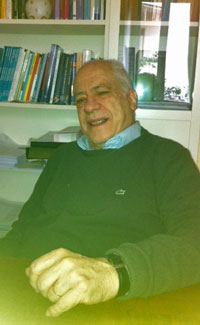
Nino Dazzi
Nino Dazzi: This is a complex topic. It offers a lot of food for thought as studying it is an ongoing process, one that, in my opinion, has just started. It is precisely in the last few years, in the very last part of the decade, that a series of therapeutic procedures—we could also call them attachment-based therapies—was elaborated in a range of settings, especially with children. So attachment is starting to be applied systematically in a therapeutic way. The attention that was first paid to the relationship between attachment and psychotherapy was limited because there are so many lines of inquiry within the wide attachment theory itself. For example, it is not the same thing to carry out research on adult attachment, such as is observed in couples, as it is to study “classical” attachment, such as between a mother and child.
However, there are some important points that I could mention about this evolution. First of all, I believe the well-known analyst Arietta Slade is pursuing a line of thinking that is already very widely shared, namely the differentiation between an attachment-based and an attachment-informed therapy, where “informed” does not mean “informed by,” or “shaped by,” but rather “informed about attachment.” In other words, in my opinion Slade shows, in a very clear and shareable way, what attachment theory can provide to a clinician working in the psychodynamic-psychoanalytic field. It certainly does not replace anything within this orientation. However, it can complete it in a useful manner.
Interventions by other authors, such as Wallin and Brisch, who have written volumes that have also been translated into Italian, may fall within the criticism leveled in a recent book by Morris Eagle, Attachment and Psychoanalysis. Eagle maintains that they, all in all, engage in a re-description, with “attachmentist” terminology, of topics that are typical of psychodynamic theory.
In other words, Eagle suggests that the “added value” of attachment theory is not so clear, with no true assimilation of these ideas into psychoanalytic theory. More important, I would say, is the effort made by Obegi and Berant’s in their volume, Attachment Theory and Research in Clinical Work with Adults, in which one can see how clinicians, despite these methodological and theoretical controversies, can adopt the parts of attachment theory that are helpful and useful for them.
In my opinion there is not a completely clear picture yet, but we are moving in a rather interesting direction. There have been numerous studies, such as from Kernberg’s group—the most important one, by Diana Diamond, describing a borderline patient—demonstrating use of the Adult Attachment Interview (A.A.I.) in various ways. However, when given to students at a specialization course for psychotherapists, the A.A.I. seems to cause a certain “wariness” and elicits a distancing response. Why is that? It is because it’s an instrument that clearly doesn’t fall within the usual “framework” of psychotherapy. How can it be used then? One thing a clinician can do is to extract some significant questions from the interview, to ask them in the context of therapy. The answers to these questions may have some meaning in the specific therapeutic context and may be a way to gauge the therapy’s progress. In other words, there is value in not using the entire A.A.I. but rather in identifying important issues raised when patients are asked individual questions from the instrument.
Studies on the concept of the “therapeutic alliance” are common to both relational thinking and attachment theory. Will you illustrate for us some points of contact and some differences in these perspectives with regard to the therapeutic alliance?
I am not sure that the comparison as you stated it can be fully made, as the only justification Bowlby gave for the importance of attachment theory in the therapeutic alliance is his assertion that the therapeutic relationship is itself an attachment relationship. Consequently the vicissitudes of the therapeutic alliance are also the vicissitudes of the attachment relationship. However, he never expanded on this topic very much. It is clear though that attachment in the therapeutic relationship has a different meaning, one more complex than the one between children and parents. Therefore any comparison between attachment theory and relational psychoanalysis, with reference to the therapeutic alliance, must be made with caution. However, the therapeutic alliance can be usefully linked to infant research, such as studies carried out by Beatrice Beebe, et al., which very effectively introduce the concept of “disruption and repair.” Although the infant researchers use this concept to refer to children and parents, which is very different from the therapeutic relationship, this concept has applicability to the therapeutic alliance as well.
Joseph Lichtenberg is another key figure in attachment theory, known for his work integrating attachment theory into his motivational systems model. Would you explain in more in detail the value of Lichtenberg’s work in observing the contact points between attachment theory and psychoanalysis?
I believe that Lichtenberg’s importance is absolutely unquestionable; however, the connection between attachment and motivational systems is not as direct as one might think. Lichtenberg explored numerous motivational systems, among which he included the attachment system. His 1989 work on motivation was hugely important at the theoretical level in that it introduced the notion of motivational systems to psychoanalytic theory. Lichtenberg also made it possible to compare various approaches to motivation, such as in the work of Liotti (2014), who greatly insisted on motivational systems. Liotti’s motivational systems are not the same as Lichtenberg’s, because, in Liotti’s opinion, what is missing from Lichtenberg’s theory is a “connective tissue” such as evolutionary theory, a connection that Liotti greatly emphasizes. However, I believe that the work carried out by Lichtenberg makes it possible not so much to include or assimilate attachment theory within the corpus of psychoanalytic theory, but rather to use it in an interesting way, similar to the attempt that Mitchell (1999-2000) made in his last book on “relationality.”
We have already highlighted how, owing to the central role attributed to human relationships, attachment theory has had an intrinsic compatibility with the relational movement from the beginning. However, it is mostly through Mitchell’s work that psychoanalysis takes into consideration attachment theory in the clinical setting. This was first initially theorized by Greenberg and Mitchell (1983) as they wrote, “John Bowlby elaborated a version of the structural model of relationships which – in its basic assumptions – explicitly looks beyond the field of psychoanalysis.” Then in a series of articles published in the late 1990s (1999a – 1999b, 2000) Mitchell described the case of Connie, in which he highlighted the explanatory potential of attachment theory and the ways in which it could be used in clinical work. Would you illustrate the importance of Mitchell’s work (more specifically through Connie’s clinical case), utilizing the principles of attachment theory within the framework of the interactive matrix which constitutes the psychoanalytic process?
Mitchell was always very cautious in expressing his opinion about Bowlby’s work, both his appreciation and his criticism. Bowlby’s importance is very limited, both in Mitchell’s own great work with Greenberg on comparative psychoanalysis, and in the book Freud and Beyond: A History of Modern Psychoanalytic Thought, written with Margaret Black.
Although Bowlby has become a very important, very interesting, theorist, he is positioned outside the psychoanalytic world. In other words, we do not deplore Bowlby like the psychoanalysts from Bowlby’s time did, though, it is clear that Bowlby goes beyond psychoanalysis—or perhaps we could say he is outside psychoanalysis. We can find some points of contact that involve both theories, although the explanations and the approaches are completely different.
However, in his last book published when he was alive, Relationality: From Attachment to Intersubjectivity (2000), Mitchell does try to show how important attachment theory is at the psyche’s basic levels of organization, along with concepts of the permeability of affects, self/other definition, and lastly the “vast ocean” of relationality. In Mitchell’s very interesting case of Connie, he applies attachment theory in the initial stages of the work in a very precise way, although it then gradually fades away in the case description. At the beginning of the case description Mitchell says, “Connie’s issues seemed to fall precisely within attachment theory….Connie had the type of early experiences for which attachment theory seems to be ‘tailor-made’; indeed, she tragically lost her mother when she was 5 years old” (p. 102). Significantly, however, this section of the book is preceded by a title with a completely different, wider meaning, “The Inner World of Loss.” Mitchell believes that attachment theory can be used within an approach which, from a purely theoretical standpoint, is not that of attachment theory. His approach is one in which attachment theory is absorbed into the concept of levels of psychic organization that are theorized in this book. It is an effort to recover some of Bowlby’s concepts, so the strategy is still, “Let’s see what we can do with attachment theory.” It remains extremely interesting.
Professor Dazzi, on behalf of the IARPP community I thank you for your generous and valuable contribution, enabling us to acquire a more in-depth knowledge of psychological and psychoanalytic thinking—specifically attachment theory—right from the voice of one of the key players of the evolution and dissemination of that thinking in Italy and throughout the world.
•••••••••• Bibliography ••••••••••
Baldoni, F. (2013). Psicoterapia e attaccamento: Il paradigma dell’attaccamento nella pratica clinica.In: Lazzari, D.(a cura di). Psicoterapia:effetti integrati, efficacia e costi-benefici. Tecniche Nuove, Milano pp. 106-140.
Bowlby, J (1988). A secure base, Routledge, London. It. Tr. Cortina, Milano 1989.
Dazzi, N., Zavattini, C. (2011). Il paradigma dell’attaccamento e la pratica clinica. Giornale Italiano di Psicologia, XXXVIII (4): 729-756.
Diamond, D., Stovall Mc Clough, C., Clarkin, J.F., Levy, K. N. (2003).Patient-therapist attachment in the treatment of borderline personality disorder. Bulletin of the Menninger Clinic,( 67). 227-259.
Eagle, M. N. (2013). Attachment and Psychoanalysis. Theory, Research and Clinical Implications. The Guilford Press Inc. It. Tr. Cortina, Milano 2013.
Greenberg, J. R., Mitchell, S. A.(1983). Object Relations in Psychoanalytic Theory. Harvard University Press, Cambridge. It. Tr. Il Mulino, Bologna 1986.
Liotti, G. (2011). Note sulla psicoterapia ispirata alla teoria dell’attaccamento. Giornale Italiano di Psicologia, XXXVIII (4): 797-803.
Liotti, G., Monticelli, F.. Teoria e clinica dell’alleanza terapeutica, Cortina, Milano 2014.
Lichtenberg, J. D. (1989). Psychoanalysis and Motivation., Hillsdale, NJ, Analytic. It. Tr. Cortina, Milano 1995.
Mitchell, S. A. (2000). Relationality: From attachment to intersubjectivity. Hillsdale, NJ, Analytic. It. Tr. Cortina, Milano 2002.
Mitchell, S. A., Black, M. J. (1995). Freud and beyond. A History of Modern Psychoanalytic Thought. Basic Books, N.Y. It. Tr. Bollati Boringhieri, Torino 1996.
Slade, A. (2008). Le implicazioni della teoria e della ricerca sull’attaccamento per la psicoterapia dell’adulto. Prospettive cliniche e di ricerca. Tr. It. in Cassidy, J., Shaver, P.R. (a cura di), Manuale dell’attaccamento 2°ediz. Fioriti, Roma 2010.
Wallin, D. (2007). Attachment in Psychotherapy. The Guilford Press, N.Y. It. Tr. Il Mulino, Bologna 2009.
Prof. Nino Dazzi
University of Rome “La Sapienza,” Italy
email Nino Dazzi
Interviewer contact information:
Maria Tammone, MD
Via Montegrappa 46
00048 Nettuno/Roma
Italia
email Maria Tammone
Prof. Nino Dazzi, Intervistato da Maria Tammone
(click here for english)

Maria Tammone
Nel contesto psicoanalitico attuale, la riflessione e il confronto tra diversi modelli e prospettive del pensiero psicoanalitico è come non mai vivace e proficua. In tale ricco contesto, il prof. Nino Dazzi si pone tra le voci più attive ed autorevoli in ambito Italiano ed Internazionale.
Il prof. Nino Dazzi, nato a Berlino nel 1937, è stato tra i fondatori ed uno dei primi docenti (dal 1975) del corso di laurea in Psicologia, istituito nel 1971 in Italia (Roma), da allora la sua carriera di accademico è proseguita senza soluzione di continuità sia all’interno della Facoltà di Psicologia Università di Roma “La Sapienza”, dove è stato Professore di Psicologia Dinamica, Preside della Facoltà (1994-2003), Prorettore dell’Università degli Studi di Roma “La Sapienza” (2005/2008). Più volte Presidente della Commissione MIUR per le Scuole di Specializzazione in Psicoterapia (1999-2002, 2006-2009, 2009 ad oggi.), e di pari passo nel più vasto consesso accademico Internazionale.
Studioso tra i più stimati ed apprezzati di tematiche riguardanti la teoria dell’attaccamento, dalle sue origini ed evoluzioni, (segue infatti il primo corso che Mary Main tiene a Roma sull’Adult Attachment Interview, 1989), in contatto e fruttuoso scambio intellettuale già nei primi anni 80 con Daniel Stern, con il quale organizza convegni e Giornate di Studio in Italia, dedicate al tema dell’Attaccamento. Insieme ad altri studiosi Italiani, (in particolare G. Liotti, che prese contatti con Bowlby), fautore della conoscenza e diffusione della teoria dell’attaccamento in Italia, autore di numerosi libri e pubblicazioni. Tutt’ora impegnato in conferenze, convegni, Giornate di Studio riguardanti l’evoluzione della teoria nell’ambito della Storia del pensiero Psicoanalitico, e le sue connessioni ed inferenze rispetto alla prospettiva psicoanalitica contemporanea, in particolare la prospettiva Relazionale.
Su tali tematiche abbiamo rivolto alcune domande al professor Nino Dazzi.
Maria Tammone: Possiamo considerare certamente John Bowlby (1907-1990) come nome di riferimento rispetto alla definizione della teoria dell’attaccamento e alla sua diffusione nel mondo accademico. La teoria dell’attaccamento sostiene che l’essere umano manifesta una predisposizione innata a sviluppare “relazioni di attaccamento” con i genitori o con altri membri della stessa specie (Baldoni, 2013). I concetti introdotti da Bowlby si contrapponevano alla posizione della psicoanalisi classica riguardo le motivazioni che portano gli esseri umani a sviluppare legami significativi. Come noto, la teoria pulsionale freudiana ritiene che il bambino sviluppi un legame significativo con la madre spinto dalla necessità di gratificare i propri desideri di natura sessuale, particolarmente quelli orali. La teoria dell’attaccamento, diversamente, sostiene che il bisogno di protezione dai pericoli rappresenta per la nostra specie una motivazione primaria altrettanto importante della pulsione sessuale. Obiettivo primario di Bowlby quindi, fu di avvicinare la psicoanalisi alla scienza contemporanea, formulando concetti basati su dati di ricerca e utilizzando una metodologia che permettesse di mettere alla prova le ipotesi di partenza. Un secondo obiettivo era prettamente clinico, in quanto sperava di contribuire, con le proprie idee, allo sviluppo di un trattamento psicoanalitico più moderno ed efficace. Anche la funzione dell’interpretazione veniva ridimensionata, in favore di una maggiore enfasi riguardo la relazione interpersonale, (Dazzi, Zavattini, 2011). Fino a non molti anni fa, infatti, la maggior parte degli psicoanalisti continuavano a ritenere questa prospettiva come “antipsicoanalitica” e a pensare che non fosse possibile organizzare una interpretazione basata sull’attaccamento.
In ogni caso Bowlby (che era stato analizzato da Joan Riviere e in supervisione con Melanie Klein) manifestò più interesse per la speculazione teorica piuttosto che per l’attività clinica; si occupò di problematiche terapeutiche soprattutto verso la fine della sua vita e fu solo nel suo libro del 1988 Una base sicura. Applicazioni cliniche della teoria dell’attaccamento, che, per la prima volta, egli espresse il proprio pensiero clinico fornendo indicazioni fondamentali per una psicoterapia basata sulla teoria dell’attaccamento. A tal riguardo, il decennio appena concluso è stato contrassegnato dal tentativo di fornire alla teoria dell’attaccamento quella spendibilità clinica che sembrava mancare.
In questa letteratura troviamo sostanzialmente due aree di confronto (Slade 2008):
- quella che riguarda le ricerche che indagano le possibili correlazioni tra classificazione e stile di attaccamento e processi ed esiti della psicoterapia;
- quella rappresentata dalla letteratura clinica, dove prevalgono le descrizioni (basate sulla pratica psicoterapeutica), di come il lavoro clinico sia stato influenzato dai concetti e dai metodi della teoria dell’attaccamento.
A tal proposito, avremmo piacere di conoscere il suo punto di vista (la sua prospettiva), su questo ampio tema di valore accademico e clinico.

Nino Dazzi
Nino Dazzi: Il tema complesso si presta a svariate riflessioni, visto che il processo è in corso, e che, secondo me, è appena iniziato, nel senso che è proprio negli ultimi anni, nell’ultimissima parte del decennio che sono state elaborate una serie di procedure terapeutiche, se vogliamo chiamiamole pure terapie basate sull’attaccamento, in vari ambiti, in particolare quello infantile per cui l’attaccamento sta cominciando ad essere applicato sistematicamente in modo terapeutico. L’attenzione che c’era stata prima al rapporto tra attaccamento e psicoterapia era stata un’attenzione molto relativa, anche perché ci sono varie linee d’indagine nell’ambito della stessa ampia teoria dell’attaccamento, per cui, per esempio, non è lo stesso fare ricerca all’interno della tematica attaccamento adulto e quindi attaccamento di coppia e invece fare ricerca in attaccamento “classico” tipo madre – bambino.
Ci sono tuttavia alcuni punti importanti che potrei citare di questa evoluzione, anzitutto a mio avviso ha svolto un lavoro molto proficuo un analista, Arietta Slade, la quale ha portato avanti una linea che credo sia ormai enormemente condivisa: la differenziazione tra una terapia attachment based e una terapia attachment informed, dove “informed” non vuol dire “informata da”, “plasmata da”, ma “informata dell’attaccamento”. In altre parole la Slade ha fatto vedere in maniera molto chiara e secondo me molto condivisibile che cosa può dare di valore aggiunto la teoria dell’attaccamento a un clinico che si trovi nell’ambito dell’orientamento psicodinamico – psicoanalitico. Non sostituisce certo niente di questo orientamento ma tuttavia può utilmente integrarlo e questo è un punto di partenza molto importante, molto rigoroso e serio da un punto di vista epistemologico e teorico perché non aspira a sovrapporre le due teorie.
Altri interventi invece, per esempio quello di Wallin, e quello di Brisch, che sono autori di volumi tradotti anche in italiano ormai ben noti, credo possano ricadere sotto la critica che recentemente in un libro intitolato Attaccamento e Psicoanalisi, Morris Eagle porta avanti e che tutto sommato si tratti di una ri-descrizione in terminologia “attaccamentista” di problemi tipici della teoria psicodinamica. In altre parole non c’è vera e propria assimilazione, ma c’è una sorta di “maquillage” (forse esagero) che non consente assolutamente un giudizio positivo su questa operazione dove il “valore aggiunto” non è così chiaro. Direi che lo sforzo più importante che è stato fatto invece sia da ravvisarsi nei dati empirici contenuti nel volume di Obegi e Berant, dove in effetti si comincia a vedere come i clinici cerchino di ignorare le controversie di tipo metodologico e teorico cercando di prendere dalle teorie dell’attaccamento quello che effettivamente gli può far comodo e può essere utilizzato.
Il quadro non è ancora, secondo me, totalmente chiaro, ma stiamo andando in una direzione abbastanza interessante: c’erano già stati altri studi come ad esempio quelli del gruppo di Kernberg, il più importante è quello di Diana Diamond sui borderline, e ci sono state utilizzazioni dell’A.A.I.; però l’A.A.I. produce quando è fornita agli allievi di un corso di specializzazione per psicoterapeuti, una certa “diffidenza” elicita una risposta di distanziamento, perché? Perché è uno strumento che non rientra evidentemente in quella che è la cornice “usuale” di uno psicoterapeuta. E allora che uso se ne può fare? L’uso è importante ma l’uso è quello che il clinico può fare cercando di estrarre dall’intervista alcune domande significative, che verranno riproposte nel corso della terapia e potranno avere significato e le cui risposte potranno anch’esse avere significato per il proseguo della terapia. In altre parole, non prendendo lo strumento in quanto tale, ma la problematica a cui lo strumento dà in qualche modo risposta.
Gli studi sul concetto di “alleanza terapeutica” sono comuni al pensiero relazionale e alla teoria dell’attaccamento. Vuole illustrarci i punti di contatto e le differenze nelle diverse prospettive rispetto al tema alleanza terapeutica?
Non sono sicuro che si possa effettivamente portare fino alle ultime conseguenze il paragone così come lei lo ha impostato, nel senso che l’unica filosofia che sta alla base delle posizioni di Bowlby e che può giustificare quindi una rilevanza della teoria dell’attaccamento per l’alleanza terapeutica è che Bowlby sosteneva che la relazione terapeutica è essa stessa una relazione di attaccamento e quindi le vicissitudini dell’alleanza terapeutica sono le vicissitudini anche della relazione di attaccamento. Il tema non lo ha mai molto sviluppato, è evidente che per l’adulto ha altro significato, più complesso ci quello che avrebbe per il bambino, e che quindi questo paragone tra teoria dell’attaccamento per quanto riguarda l’alleanza e psicoanalisi relazionale è da prendere con beneficio d’inventario. Piuttosto invece la teoria dell’alleanza terapeutica può utilmente riferirsi a quegli studi di infant research che in particolare Beatrice Beebe, et al., hanno portato avanti e che introducono in modo molto efficace, sebbene a livello infantile, che è molto diverso, il concetto di “rottura e riparazione” e tornerà invece con altro significato ma con sicuro parallelismo nell’ambito della relazione terapeutica e quindi dell’alleanza terapeutica.
Un altro autore di grande rilievo per il lavoro svolto nell’assimilare la teoria dell’attaccamento nel suo modello dei sistemi motivazionali è Joseph Lichtenberg: vuole illustrarci più in dettaglio il valore dell’opera di Lichtenberg nel rilievo di punti di contatto tra teoria dell’attaccamento e psicanalisi?
Ritengo che l’importanza di Lichtenberg sia assolutamente indiscutibile e che tuttavia il passaggio non sia diretto. In altre parole Lichtenberg ha esplorato i sistemi motivazionali tra i quali ha incluso anche quello dell’attaccamento. Il suo lavoro è un lavoro sulla motivazione del 1989, che è stato enormemente importante non solo a livello teorico, nel senso che introduce questa nozione di sistema motivazionale dentro la teoria psicoanalitica, ma anche perché, in effetti, in questo modo ci si può confrontare con altre impostazioni. Per esempio quella del nostro Liotti (2014) che sui sistemi motivazionali ha molto insistito. I sistemi motivazionali di Liotti non sono dello stesso tipo di quelli di Lichtenberg, anche se il confronto è possibile perché quello che manca a parere di Liotti nella teoria di Lichtenberg è che i suoi sistemi motivazionali non sono tenuti insieme da un tessuto connettivo come quello della teoria dell’evoluzione su cui invece Liotti insiste fortemente, tuttavia io credo che il lavoro che ha fatto Lichtenberg permetta non tanto di inserire o assimilare la teoria dell’attaccamento nel corpus della teoria psicoanalitica, quanto di fare un uso piuttosto interessante, non simile perché molto diverso, ma il tentativo che ha fatto nel suo ultimo libro sulla “relazionalità” Mitchell (1999 – 2000).
Abbiamo già messo in evidenza come, per la centralità attribuita alle relazioni umane, la teoria dell’attaccamento ha avuto fin dall’inizio una compatibilità intrinseca con il movimento relazionale, tuttavia, è soprattutto ad opera di Mitchell che la psicoanalisi relazionale prende in considerazione la teoria dell’attaccamento nell’ambito della clinica. Partendo dalla prima teorizzazione di Greenberg e Mitchell (1983) che scrivevano “ John Bowlby ha elaborato una versione del modello strutturale delle relazioni (che) per le sue premesse di base, guarda esplicitamente oltre il campo della psicoanalisi”. Per arrivare, in una serie di articoli apparsi alla fine degli anni 90 (1999° – 1999b, 2000) con la descrizione del caso di Connie, a cercare ed evidenziare la potenzialità esplicativa della teoria dell’attaccamento e il modo in cui i suoi sviluppi possono essere utilizzati nel lavoro clinico. Vuole illustrarci l’importanza del lavoro di Mitchell (nello specifico, attraverso il caso clinico di Connie), per la valorizzazione dei principi della teoria dell’attaccamento nell’ambito della matrice interattiva che costituisce il processo psicoanalitico?
Mitchell è sempre stato molto cauto nell’esprimere giudizi sia di apprezzamento sia limitativi sull’opera di Bowlby. Ma, mentre l’importanza di Bowlby è molto ristretta sia nella sua (di Mitchell) grande opera con Greenberg sulla psicoanalisi comparativa, sia poi nel libro “L’esperienza della psicoanalisi” (con la moglie Margareth Black), dove, in qualche modo, Bowlby diventa un teorico molto importante, molto interessante, ma dichiaratamente fuori dell’ambito psicoanalitico che è una precisa indicazione. Cioè, non condanniamo Bowlby come facevano i primi psicoanalisti dell’epoca di Bowlby, però è chiaro che Bowlby va oltre la psicoanalisi, o forse potremmo dire “è fuori della psicoanalisi”. Possiamo trovare dei punti di contatto circa i fenomeni che interessano entrambe le teorie ma poi le spiegazioni e il modo di procedere sono completamente diversi tra le due teorie, mentre nell’ultimo libro pubblicato in vita “Il modello relazionale” Mitchell cerca di fare una teorizzazione sui livelli di organizzazione della psiche, facendo vedere quanto è importante la teoria dell’attaccamento al primo gradino di questi livelli di “organizzazione”; altri saranno quelli della permeabilità degli affetti, quelli della definizione sé/altro e infine il “vasto mare” della relazionalità.
Nel caso “Connie”, molto interessante, applica in modo molto puntuale (che poi svanisce man mano nella descrizione del caso) questa impostazione così tarata sulla teoria dell’attaccamento che connota le fasi iniziali. Mitchell dice proprio, cominciando all’inizio dell’esposizione del caso, “…I problemi che Connie presentava sembravano rientrare in maniera assolutamente rilevante per quanto reguarda la teoria dell’attaccamento”. Dice in effetti (lo cito in maniera letterale): “Connie aveva avuto quel tipo di esperienze precoci per le quali la teoria dell’attaccamento sembra “fatta su misura”: aveva infatti tragicamente perso la madre a cinque anni… (id, pag. 102)”. Però, significativamente, il paragrafo che ho letto e inizia così è preceduto da un titolo di tutt’altro significato molto più largo e comunque diverso “Il mondo interno della perdita”. Lui ritiene che si possa utilizzare la teoria dell’attaccamento all’interno di un approccio che dal punto di vista puramente teorico non è quello della teoria dell’attaccamento però viene riassorbito, sempre a livello teorico, nei livelli di organizzai pone psichica che in questo libro sono teorizzati. È uno sforzo che recupera alcuni concetti di Bowlby, quindi la strategia è sempre del tipo “vediamo cosa possiamo farcene della teoria dell’attaccamento” ma rimane estremamente interessante.
La ringraziamo prof. Dazzi, a nome di tutta la comunità IARPP, per il prezioso contributo che ci permette di approfondire la conoscenza del pensiero psicologico e psicoanalitico, nello specifico della teoria dell’Attaccamento, dalla voce di uno dei protagonisti dell’evoluzione e diffusione di tale pensiero.
•••••••••• Bibliografia ••••••••••
Baldoni, F. (2013). Psicoterapia e attaccamento: Il paradigma dell’attaccamento nella pratica clinica.In: Lazzari, D.(a cura di). Psicoterapia:effetti integrati, efficacia e costi-benefici. Tecniche Nuove, Milano pp. 106-140.
Dazzi, N., Zavattini, C. (2011). Il paradigma dell’attaccamento e la pratica clinica. Giornale Italiano di Psicologia, XXXVIII (4): 729-756.
Diamond, D., Stovall Mc Clough, C., Clarkin, J.F., Levy, K. N. (2003).Patient-therapist attachment in the treatment of borderline personalità disorder. Bulletin of the Menninger Clinic,( 67). 227-259.
Bowlby, J. Bowlby, R. J. M. and A. Gatting (1988). Una base sicura, Tr. It Cortina, Milano 1989.
Greenberg, J. R., Mitchell, S. A.(1983). Le relazioni oggettuali nella teoria psicoanalitica. Tr. It. Il Mulino, Bologna 1986.
Liotti, G. (2011). Note sulla psicoterapia ispirata alla teoria dell’attaccamento. Giornale Italiano di Psicologia, XXXVIII (4): 797-803.
Slade, A. (2008). Le implicazioni della teoria e della ricerca sull’attaccamento per la psicoterapia dell’adulto. Prospettive cliniche e di ricerca. Tr. It. in Cassidy, J., Shaver, P.R. (a cura di), Manuale dell’attaccamento 2°ediz. Fioriti, Roma 2010.
Wallin, D. (2007). Psicoterapia e teoria dell’attaccamento. Tr. It Il Mulino, Bologna 2009.
Eagle, M. N. (2013). Attaccamento e Psicoanalisi. Teoria, Ricerca e Implicazioni Cliniche. Tr. It Cortina, Milano 2013.
Lichtenberg, J. D. (1989). Psicoanalisi e Sistemi Motivazionali. Tr. It. Cortina, Milano 1995.
Mitchell, S. A. (2000). Il Modello Relazionale. Dall’attaccamento all’intersoggettività. Tr. It. Cortina, Milano 2002.
Mitchell, S. A., Black, M. J. (1995). L’esperienza della Psicoanalisi. Tr. It. Bollati Boringhieri, Torino 1996.
Prof. Nino Dazzi
University of Rome “La Sapienza,” Italy
Email Nino Dazzi
Interviewer contact information:
Maria Tammone, MD
Via Montegrappa 46
00048 Nettuno/Roma
Italia
email Maria Tammone


